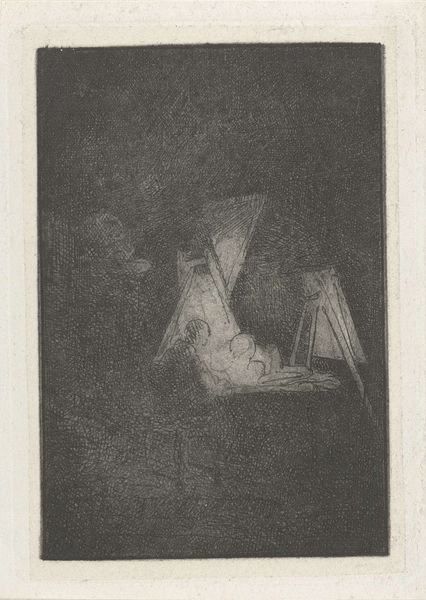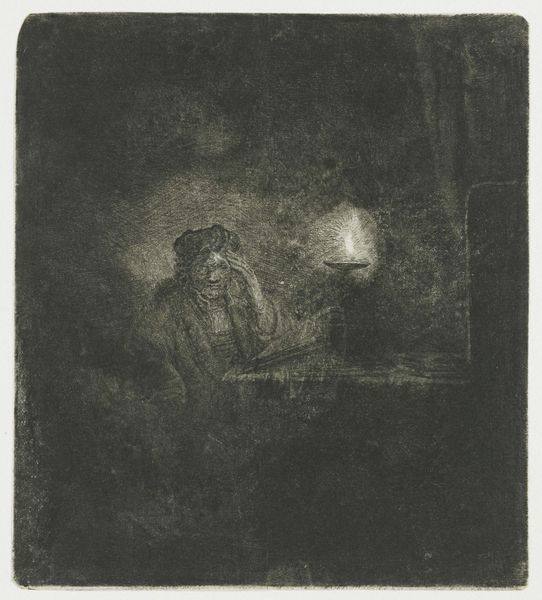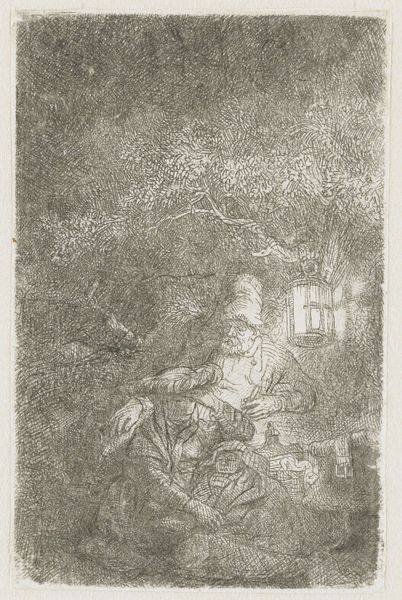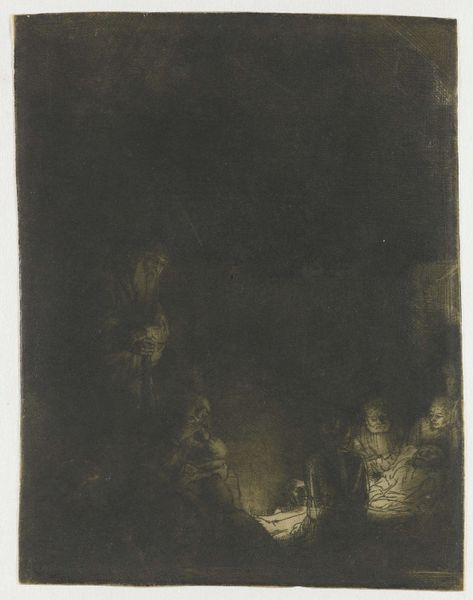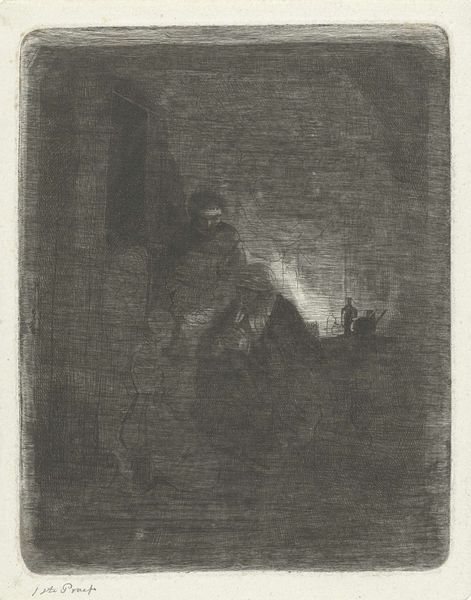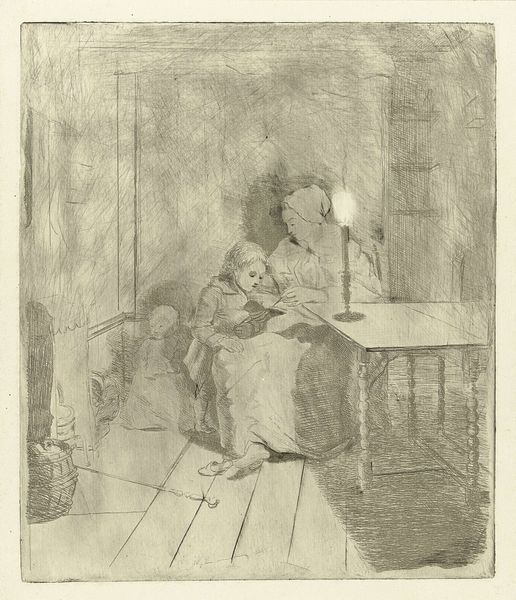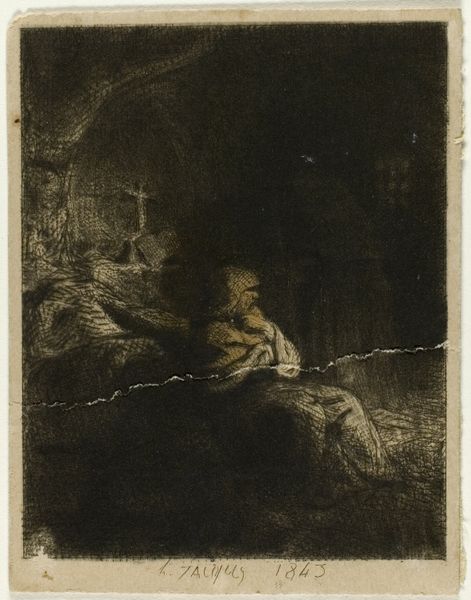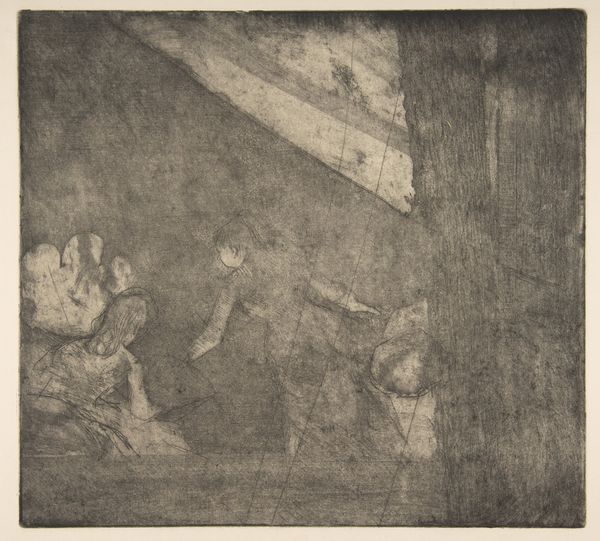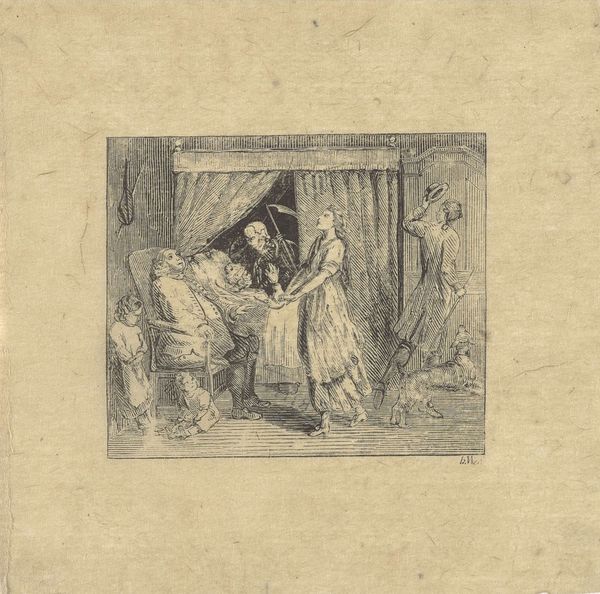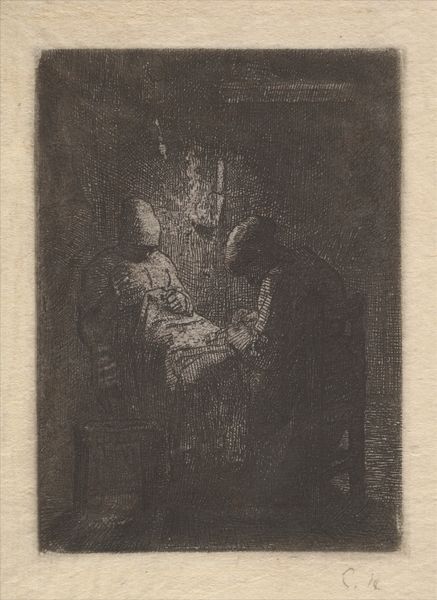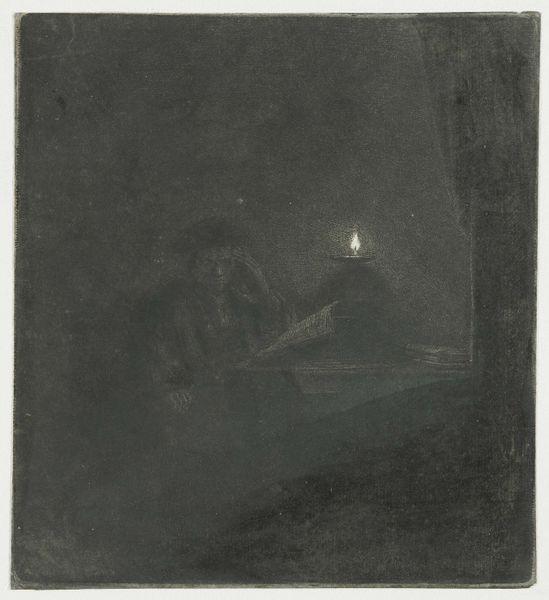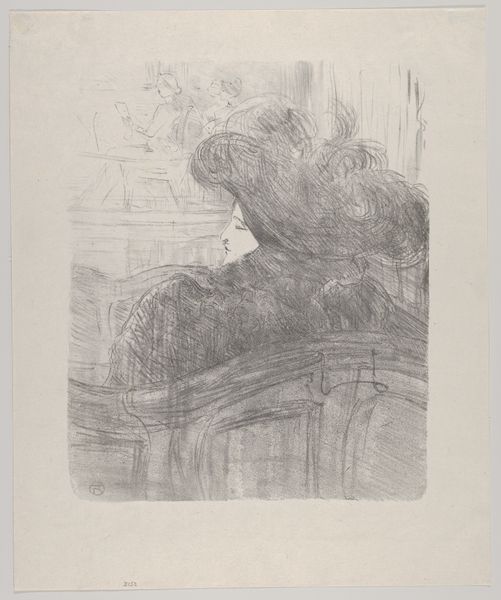
#
pencil drawn
#
amateur sketch
#
aged paper
#
toned paper
#
light pencil work
#
pencil sketch
#
incomplete sketchy
#
personal sketchbook
#
sketchbook drawing
#
sketchbook art
Dimensions: width 102 mm, height 119 mm
Copyright: Rijks Museum: Open Domain
Editor: So, this is Jacobus Ludovicus Cornet's "Geleerde in zijn studie," made sometime between 1825 and 1882, here at the Rijksmuseum. It looks like a quick pencil sketch, maybe a study for something larger. The paper has aged, and the lines are quite faint. What strikes you about this work? Curator: The immediacy of the material production is compelling. Notice the tentative lines – the visible process of the artist searching for form. It’s a direct trace of Cornet's hand and thought process. Where does this place within art history for you? Editor: I guess it feels like a precursor to something, not a finished work in itself. More like a note, or a behind-the-scenes glimpse. It makes me wonder what it might have been for. Curator: Precisely. Consider the paper itself, likely mass-produced, relatively inexpensive. Its inherent qualities -- texture, absorbency -- dictated the pencil's movement, influencing the final image. Could this suggest something about artistic labor? Perhaps undermining the elevated status afforded to "fine art"? Editor: You mean because it's not, like, oil on canvas? More accessible because of the medium? And maybe because it shows the work, the making of art? Curator: Yes, the work evident. The image also asks to see art as arising from mundane activities, like practicing or planning. We see both Cornet's intellectual labor in rendering the scholar, as well as his own, physical work to depict. Editor: That's interesting, reframing it as a commentary on labor rather than just a quick sketch. Curator: Exactly. Thinking about the social context, was sketching a form of artistic training, even entertainment, more available than larger projects at that time? These objects shift the focus from a finished image, asking us instead to contemplate art’s production, its materials, and who it included—or excluded— from artistic practice. Editor: I hadn't considered the social implications of the medium itself. Thanks, that gives me a totally different way of looking at it. Curator: Absolutely.
Comments
No comments
Be the first to comment and join the conversation on the ultimate creative platform.
